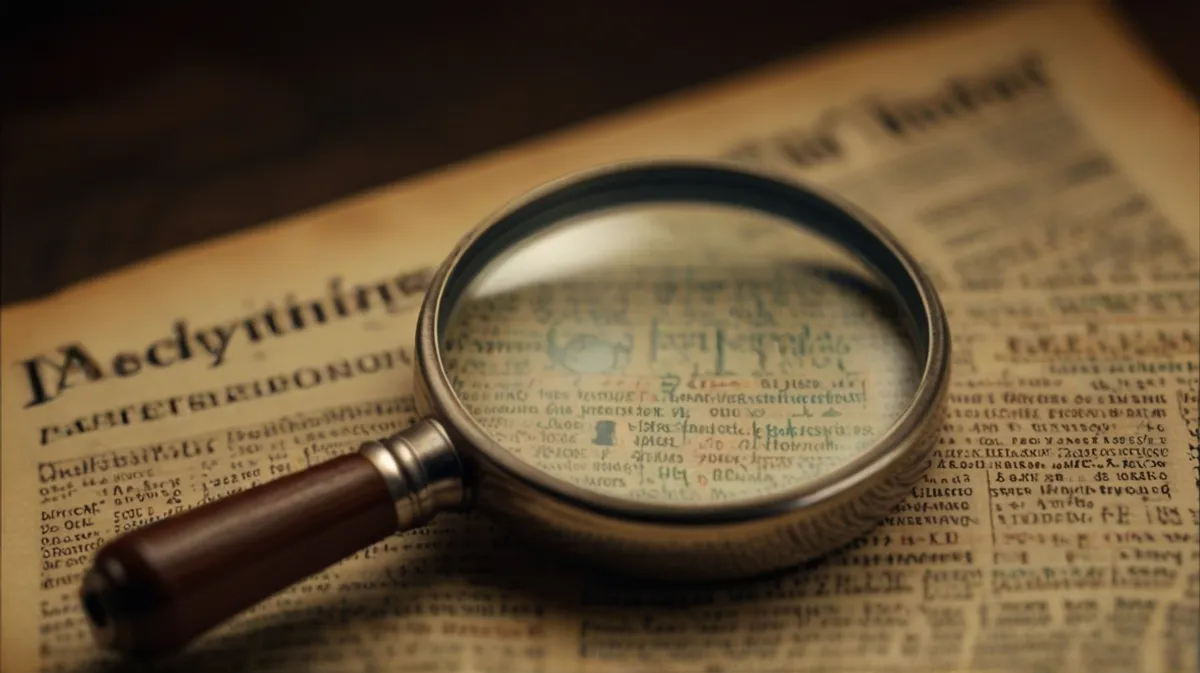“The splinter in your eye is the best magnifying-glass available.” ― Theodor Adorno, Essays on Music
Although Theodor addressed the eye as the best magnifying-glass, no one can dismiss the significant value of using a magnifying glass in scientific explorations, as it could reveal intricate details that were otherwise unnoticeable. From the humble beginnings of the magnifying glass to the cutting-edge microscopes of today, the ability to magnify objects has been a game-changer for scientific discovery. The magnifying glass, a simple yet ingenious device, has played a pivotal role in unlocking the mysteries of the natural world and advancing our understanding of the intricate details that lie beyond the naked eye.
⁕ ⁕ ⁕
📚 A Brief History of Magnification
The origins of the magnifying glass can be traced back to the ancient civilizations of Greece and Rome, where polished rock crystals were used to magnify objects [1]. However, it was not until the 13th century that the first documented use of a lens for magnification purposes occurred, paving the way for the development of spectacles and microscopes. The magnifying glass, with its ability to enlarge objects and reveal hidden details, quickly became an indispensable tool for scientists, explorers, and scholars alike. Over the centuries, advancements in lens technology and optical science have led to the creation of powerful microscopes capable of magnifying objects thousands of times their original size, revolutionizing fields such as biology, chemistry, and materials science.
🔍 The Magnifying Glass in Action
🕵️♀️ Forensic Investigations
In the realm of forensic science, the magnifying glass has been an invaluable tool for examining minute details and uncovering crucial evidence. From analyzing fingerprints and fibers to identifying microscopic traces of blood or other bodily fluids, the magnifying glass has played a vital role in countless investigations [2,3]. By magnifying objects and revealing hidden details, forensic scientists can reconstruct crime scenes, identify suspects, and solve complex cases with precision and accuracy.
🛠️ Archaeological Discoveries
Archaeologists have long relied on the magnifying glass to study ancient artifacts and unravel the mysteries of past civilizations. By examining intricate carvings, inscriptions, and other minute details, the magnifying glass has shed light on the cultural practices, beliefs, and technologies of our ancestors [4]. From deciphering hieroglyphics to analyzing pottery fragments, the magnifying glass has been instrumental in piecing together the puzzle of human history.
🌿 Naturalist Explorations
For naturalists and biologists, the magnifying glass has been a gateway to exploring the intricacies of the natural world. From observing the intricate structures of plants and insects to studying the behavior of microscopic organisms, the magnifying glass has facilitated countless discoveries and enriched our understanding of the diversity of life on our planet [4]. By magnifying objects and revealing hidden details, naturalists can uncover the beauty and complexity of the natural world and share their findings with the world.
Limitations of Magnifying Glasses
While the magnifying glass has been an invaluable tool, it is essential to recognize its limitations. Unlike modern microscopes, which offer higher magnification and advanced imaging capabilities, the magnifying glass has a relatively low magnification power and can only reveal so much detail. However, its simplicity and portability make it an accessible and practical tool for preliminary examinations and field work.
Conclusion
As technology continues to evolve, sophisticated imaging techniques and sophisticated microscopes have become more prevalent in scientific research. Nevertheless, the magnifying glass remains an essential tool, serving as a bridge between the visible and the invisible, and igniting our curiosity about the intricate details that surround us.
⁕ ⁕ ⁕
References
[1] Historical Context of the Magnifying Glass
[2] Dictionary of Forensic Science
[3] Forensics
[4] Magnifying glass
⁕ ⁕ ⁕
Thank you for reading.
I hope you found this “The Magnifying Glass: An Indispensable Tool for Scientific Exploration” article helpful. Please share if you like and leave any comment to let me know your thoughts. Also, subscribe to my Newsletter to get notification of my latest posts.
You can connect with me on LinkedIn, Instagram, Twitter or GitHub.
